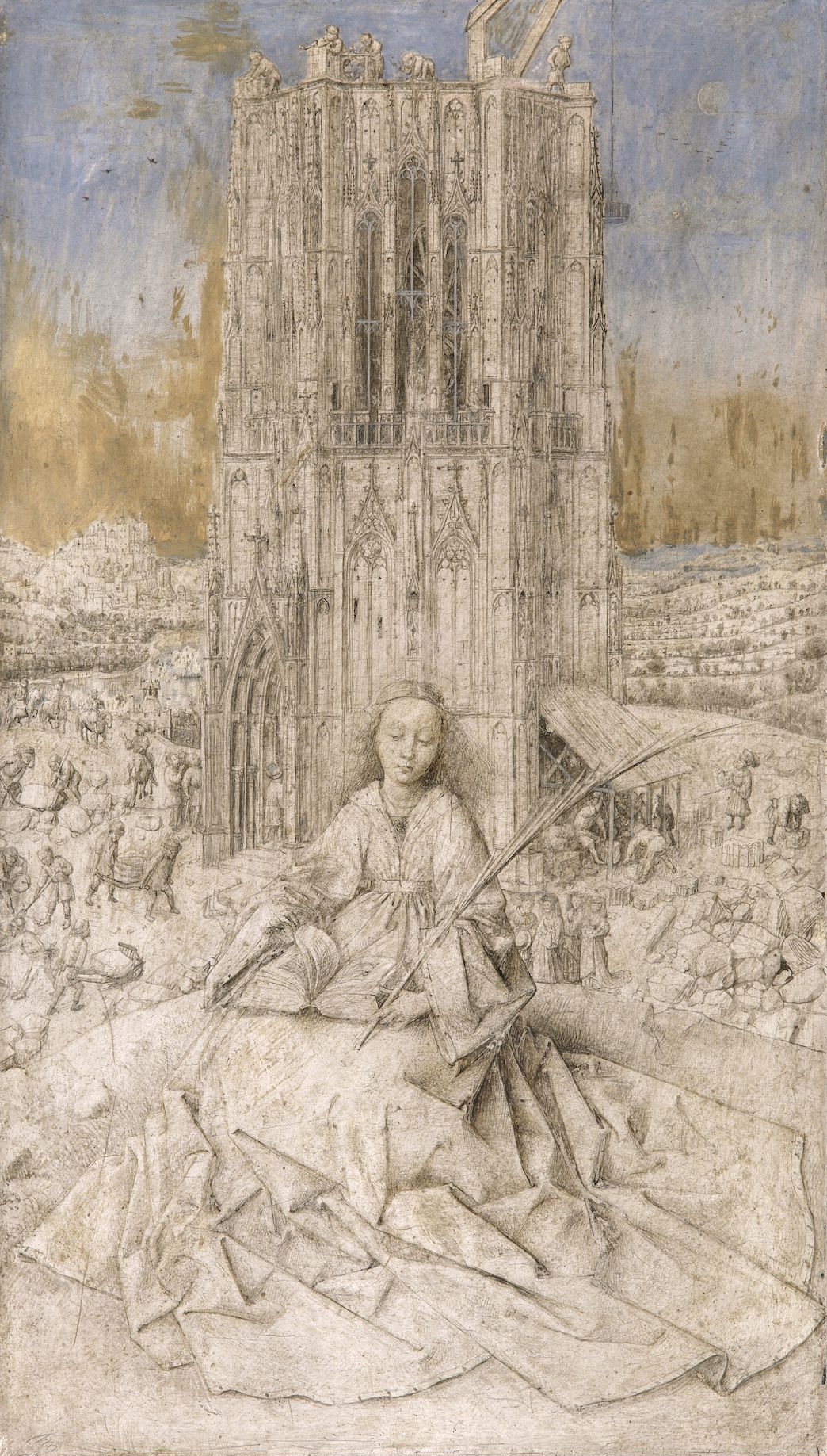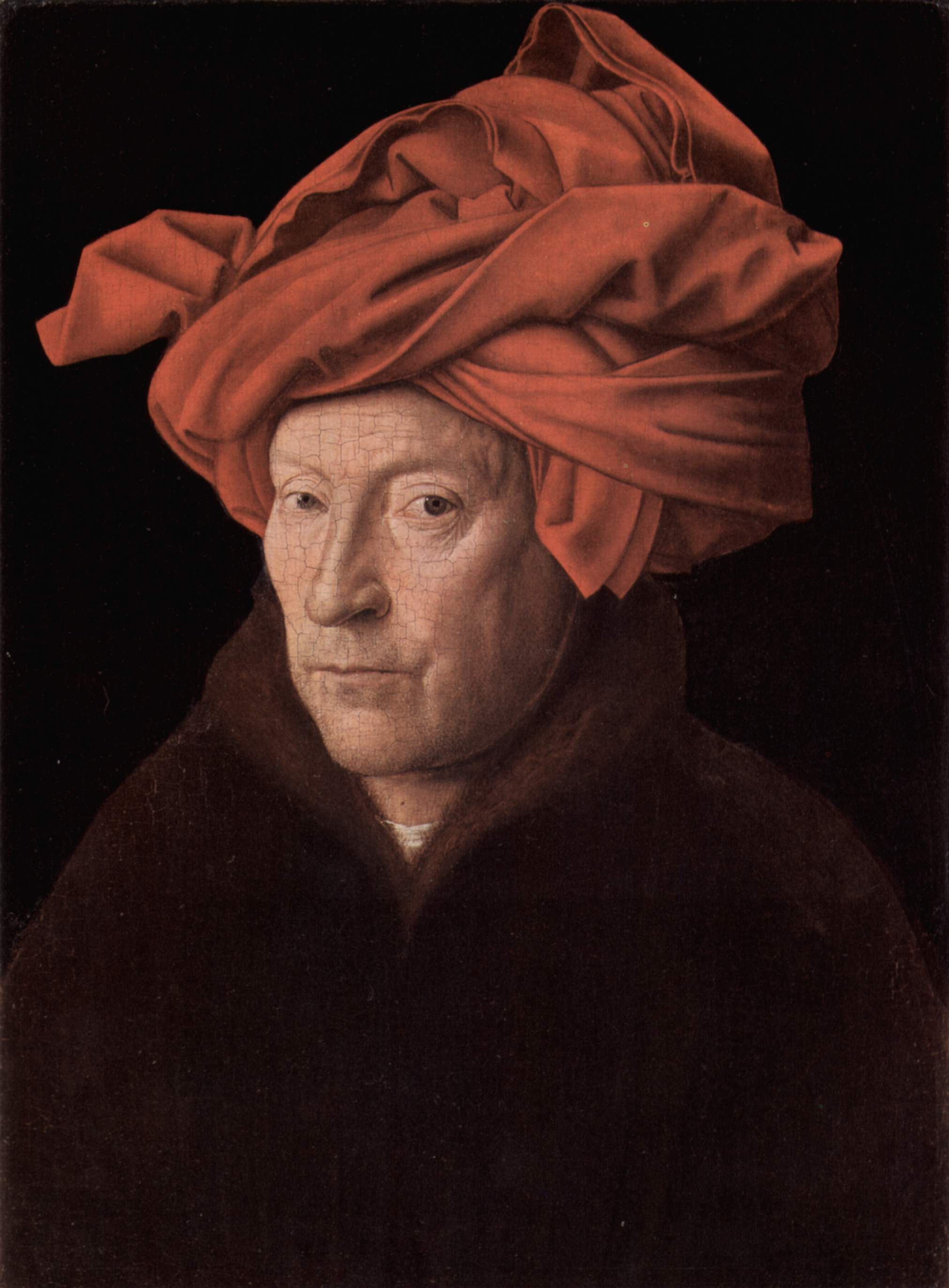This painting tells the story of Saint Barbara. She was the daughter of a nobleman who wanted to hide her away from admirers by locking her up in a tower. When her father tried to marry her off, Barbara resisted fiercely. To calm her down, he allowed her to leave the tower from time to time. During one of her trips out, Barbara secretly converted to Christianity. Her father responded furiously and handed her over to the governor, who had her tortured. But it was no good: every night, her wounds were miraculously healed. In the end, Barbara’s father beheaded her with his own hands.
The young woman is shown leafing through a prayer book. The palm branch in her left hand identifies her as a martyr. It symbolizes her triumph over death and her choice of eternal life. Builders are hard at work behind her. Together, they are constructing a Gothic church tower representing the growth of Christianity.
The tower and its surroundings are a hive of activity. A reference, perhaps, to the Church, in which each Christian can make his or her contribution to God’s work. To this day, bricklayers, masons, roofers, and master builders venerate Barbara as their patron saint.
The extremely refined working out of this underpainting or dead color is unique for the 15th century. Van Eyck painted the sky and then stopped, making this the oldest unfinished panel we know of from the Low Countries. All the same, the artist signed the work: ioh[anne]es de eyck me fecit 1437. Does this mean that the painting was finished as far as he was concerned?
Jan van Eyck, together with Rogier van der Weyden, is one of the figureheads of the Flemish Primitives, a group of painters from the Low Countries in the 15th and early 16th centuries. They set out to achieve realistic images with lots of details. What stands out most in this work is the precise rendering of the tower. Another noteworthy detail is the way Saint Barbara is sitting on the ground. Perhaps Van Eyck intended this to emphasize her humility.
We present today's painting thanks to the Royal Museum of Fine Arts in Antwerp.
P.S. You don't know much about van Eyck? Here are 10 things you need to know about this exquisite painter!


 Jan van Eyck
Jan van Eyck